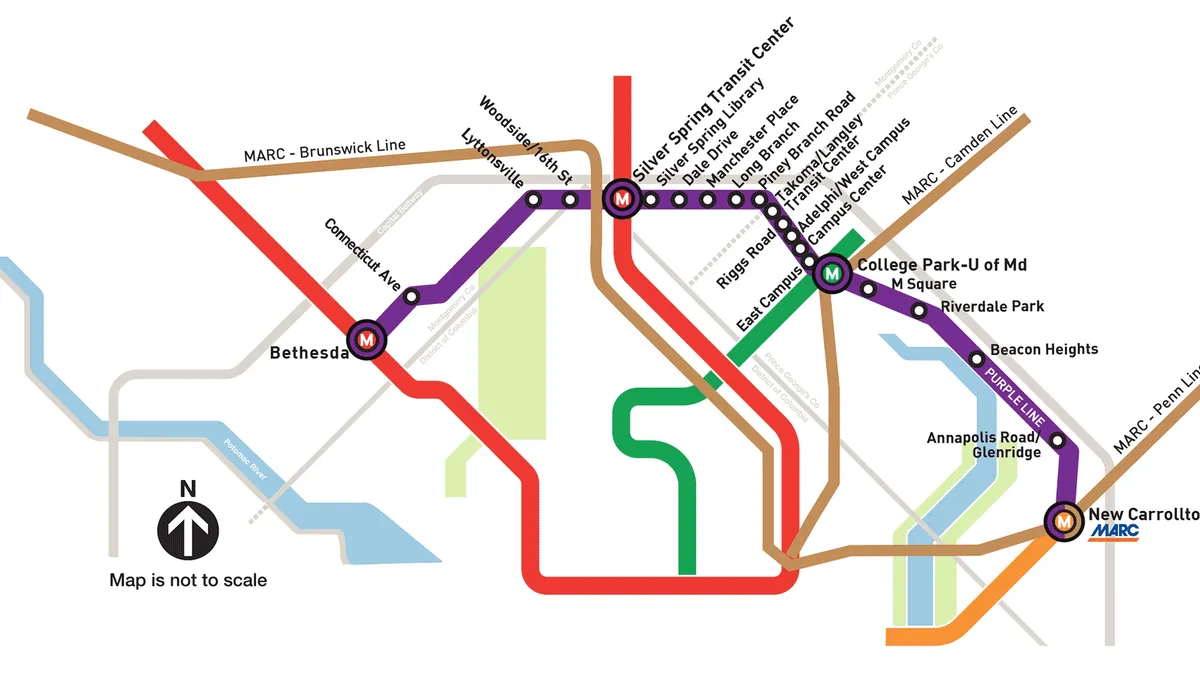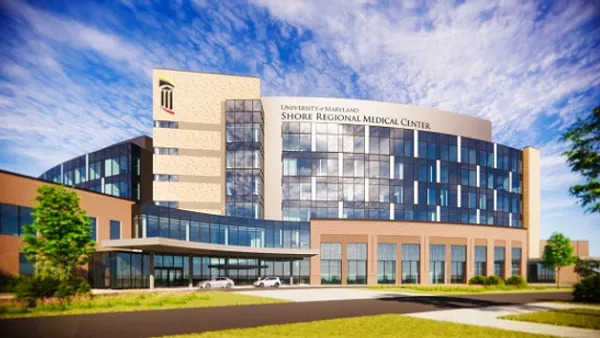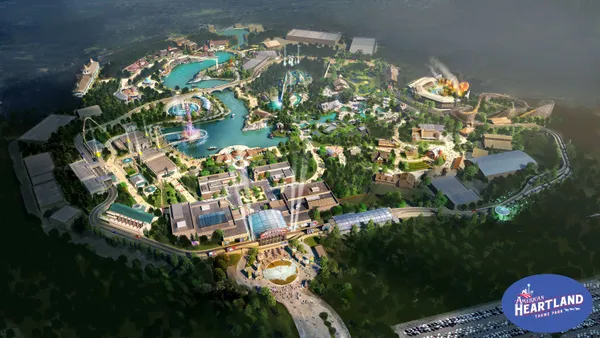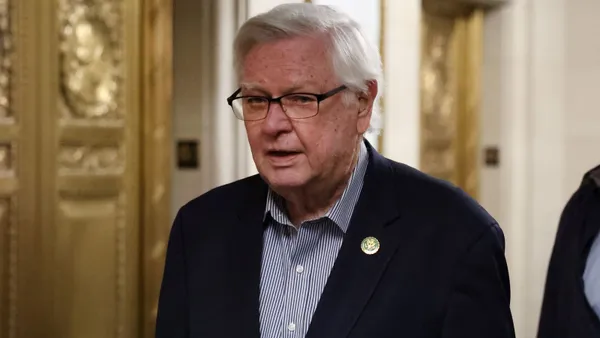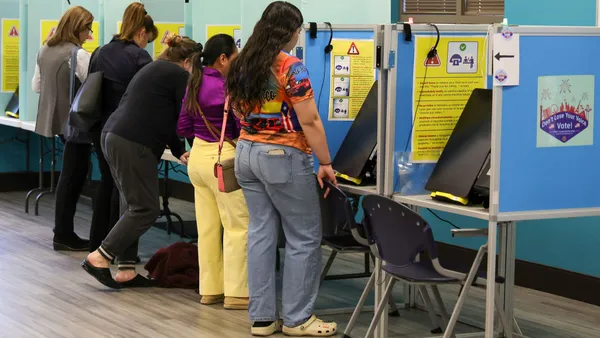UPDATE: Maryland's beleaguered Purple Line light-rail project broke ground today, Bethesda Magazine reported. Maryland Gov. Larry Hogan and U.S. Transportation Secretary Elaine Chao were present.
Dive Brief:
-
The groundbreaking comes a week after the $5.6 billion project was given a $900 million federal full funding agreement, according to The Washington Post.
-
The agreement frees up $325 million in federal funds already allocated to the project and sets the stage for a total of $900 million in federal dollars over the agreement's term. The investment is critical for the state to afford the $2 billion-plus needed for construction.
-
The deal will be inked Monday, and it follows a series of recent conversations between Maryland Gov. Larry Hogan and U.S. Transportation Secretary Elaine Chao. Construction on the 16-mile line will begin "within weeks" of the deal being signed, The Post reported.
Dive Insight:
The imminent deal between Maryland and the federal government marks the Purple Line's second recent victory following months of delays and questions about its feasibility. Last month, a federal appeals court judge gave the go-ahead for the project to seek federal funding after Maryland officials argued the state would lose $800 million and face "irreparable harm" if the project could not move ahead.
Though the decision allowed construction to proceed, the project's fate still depended on it getting federal funding. It was also questioned whether the Purple Line would survive the Trump administration's efforts to reduce federal transit spending.
The rail line cleared that hurdle thanks in large part to how far along it was in planning. It will move forward as a multibillion-dollar public-private partnership with a Fluor-led joint venture representing the private sector stake responsible for design-build and operations. The state will spent $3.3 billion and the JV will finance $1 billion in exchange for an annual maintenance fee of $149 million.
Advocates expect the project to become an example for funding and maintaining other infrastructure projects through P3s.
The mechanism is gaining attention as one potential solution for financing large-scale infrastructure improvements that are needed across the country. P3s are most commonly used for projects that generate revenue, such as through tolls or user fees, in order to fulfill the private sector's desire for a return on their investment. The challenge ahead will be to determine the extent to which P3s can be used to finance smaller, non-revenue-generating projects or those that don't turn in enough income to catch private investors' eyes.


